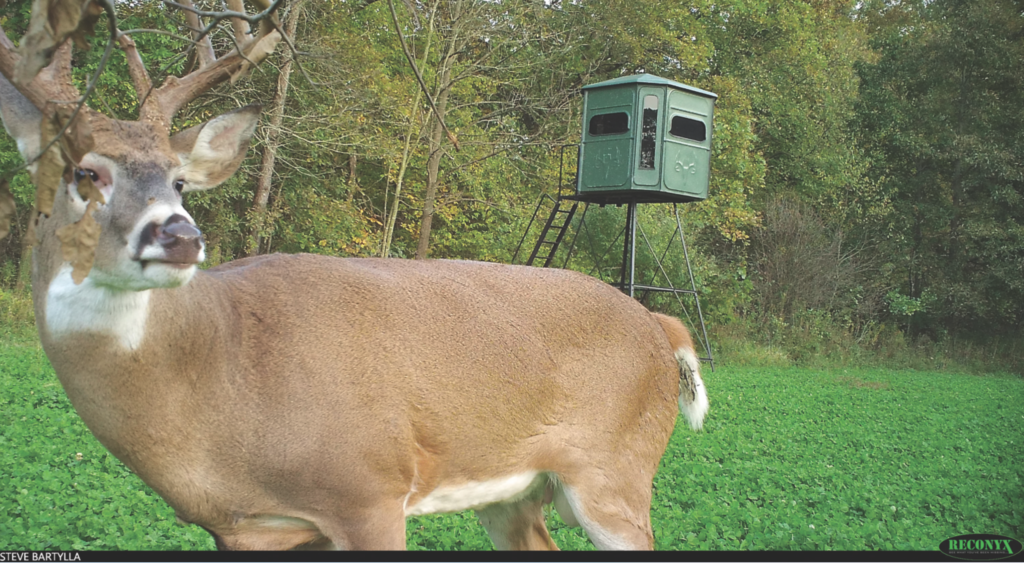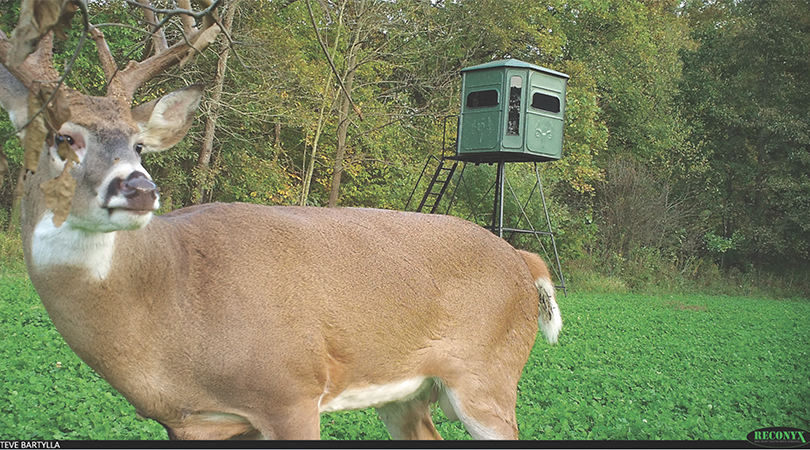You don’t need to have 2,000 acres to have great hunting. In fact, if you embrace the challenges, you too can enjoy consistent success on as little as 20 acres. Here’s how to do it.
Let’s face it, it’s really cool to write articles and give seminars about improving and/or managing 2,000-acre properties for deer hunting — frankly, it’s a sexy topic. On the flip side, writing and talking about improving 20 acres just isn’t anywhere near as compelling, for a whole bunch of reasons. Here’s the catch. That 2,000-acre property is likely to offer decent hunting even if you are doing everything wrong. Try that on 20 acres and the highlight of most hunts will be watching squirrels and birds.
No, you’ll never be able to do all of the cool management projects on 20 acres that you can on 2,000, but improving and intelligently hunting that 20 acres is mission critical to being consistently successful. Since there are many more of us controlling 20 than 2,000 acres, let’s talk about the challenges and potential solutions for getting the most out of your micro-property deer management efforts.
Embrace the Limitations
One of the coolest parts of managing large acres is that you can very likely provide deer with absolutely everything they want and need on that ground. Simply put, offer deer better food, illusion of safety, comfort, breeding opportunities, lower stress and better water than they can get anywhere else within their home range and they will spend a disproportionate amount of time there. Assuming the deer are free ranging, will they ever leave? The ones around the edges sure will, along with some of the rangier, more centrally located bucks — but fewer than if the habitat was wanting in one or more ways.
Now look at a 20-acre property. It takes an extremely special 20, even a 120-acre piece, to offer the above features better than deer can get anywhere else within their home range. Pouring gallons of water into a 20-ounce glass just doesn’t work.

Unless you happen to have a truly unique small property, you need to embrace the reality that you just can’t do it all on that ground. If you try, you likely won’t be able to address any of those wants and needs at a better level than what’s on the neighboring grounds — likely resulting in a little bit of everything, but not great anything, as it applies to increasing deer activity levels.
Instead, when managing smaller properties, it’s almost always best to focus your attention on amplifying the positive aspects of what the ground already offers and/or the overall area is lacking. Most grounds can be categorized as feeding destinations, bedding areas, transition zones between the two or properties that offer it all. As mentioned, offering it all is a big stretch for most limited-acre properties. However, that leaves three other possibilities, each of which can potentially provide fantastic hunting.
To decide which route to go, I always follow the same general steps. Step one is learning, as well as I can, through foot scouting and studying topos and aerials, what the habitat has to offer and can realistically offer with some manipulations, while also learning how the deer are currently using the dirt. When it comes to improvements, I’ve found they are almost always more successful when they encourage deer to increase those activities they are already doing on the ground rather than trying to get them to engage in new behaviors or stop doing things they historically have done.
For example, if you own a 20 that’s between a prime bedding area and sprawling ag fields, your property is a natural transition zone. Take half of that ground and transform it into a food source, with the other half being bedding cover, and you will very likely get some limited bedding and increased feeding on that property. But most of the deer will very likely continue to bed where they did before and still hit those ag fields on the other side.
On the flip side, positive results are consistently higher for me when I work with what’s already happening there. In this case, some blockading to form a couple of high-odds, low-impact funnels, significantly increasing shot opportunities at the deer transitioning through the ground, would be a great first step. Adding a small food plot or two on the ag side of the funnels would further encourage transitioning deer to use them, and burn up a little extra time staging on your property before hitting the ag fields. Might as well toss in a small water source within shooting range of those funnels, a handful of scrape trees, do some edge feathering to jack browse and limit sight distance and you’ve got a property that probably hunts pretty dang good.
Just because your grounds fall into one category doesn’t mean you can’t offer other habitat features. It’s often a good move to try to get a family group of does, fawns and young bucks to bed on that 20, even when it’s best suited as a feeding destination. The catch is to figure out how to maximize the feeding activities — obviously laid out in a manner that maximizes high-odds, low-impact stand locations — before determining if there’s room to include a family group bedroom. While that family group bedding isn’t the primary goal, you’ll be happy to take the extra buck traffic when they come to check out your does.
The point is that it’s always important to know what the habitat offers and how the deer are using it, before generating an improvement plan.
Plan Your Attack
I place supreme importance on low-impact access to my hunting stand sites — and that means both entries and departures. Frankly, it doesn’t matter if I’m hunting pummeled public grounds or pristinely managed sprawling private acreages, there’s a huge advantage to making sure the deer don’t realize I’m hunting them.

Nowhere is that more key than for small property land managers. Face it, if you walk through the center of that 20 to get to your stand it’s almost a lock that somewhere over half of the deer on that ground will know darn well you’re there. The biggest challenge most smaller property managers face is low-impact access and hunting. On big grounds, it doesn’t sting much to create dead zones of deer activity for your odors to dump into, because you have the acres to spare. Try doing that on 20 acres and you just trashed a large section of your limited acres.
Every management situation is different, as topography, habitat and deer usage patterns vary. In many situations, accessing the ground along the edges of the property lines, with winds either blowing down the lines or into the neighbor’s property, is the way to go. That’s particularly true when deer are bedded or feeding on that dirt. However, if the ground is a transition zone, center access might have the least negative impact, because your scent won’t be blowing into the neighbors’ land, where you expect the deer to come from.
Unfortunately, without studying each of your grounds, it’s impossible for me to say exactly how access should be set up for your situation. Just understand how critical low-impact access and hunting is on a small property.
Home Improvements
Most of you already know that low-impact, high-odds stand sites don’t typically occur naturally in high quantities. That’s true everywhere I’ve ever hunted. Now, consider acreages in the double digits and odds are better that you’ll have none than even one such setup naturally occurring on the ground.
Luckily, it’s possible to manipulate nature with habitat improvements to create a deer flow that leads them past your high-odds, low-impact stands. Remember that transition zone property I mentioned earlier? If you’re going to try to funnel deer down to intercept a higher percent of them transitioning through your grounds, why wouldn’t you make those funnels in locations you can safely get to and from, with a safe wind that also works for hunting?
Therein lies another key to making any improvements sing. Figure out how to get in and out undetected, as well as what tree the stand will be in, before making a single improvement. Build improvements around safe to access and hunt locations and you’re home free.
On feeding destination grounds, lay out the improvements around potential stands in a way that you know where the deer will be coming from and going to, using those safe hunting winds. If you create a doe bedding area on that property, do so in a way that will allow low-impact hunting on a downwind side during the rut. On the bedding property, position those staging plots, located between bedding and the neighbor’s food, in areas where you can hunt in a low-impact manner.
When doing any of this stuff, yes, your primary goal is to increase the health and overall quality of life of the deer on your grounds. That’s awesome! Just remember that there’s not a darn thing wrong with doing so in ways that drastically increase the quality of your hunting as well. With nothing more than a chainsaw, you can remake their world. It’s a waste not to do so in ways that manufacture high-odds, low-impact stand locations.
Conclusion
Discussing effective management practices for small property landowners isn’t an overly sexy topic, but I feel it’s desperately needed. The big boys already have a bunch of advantages the small property manager never will. However, you don’t need sprawling acres to have great hunting. It just doesn’t happen naturally. Luckily, you are already manipulating nature through your improvements. All you have to do is lay them out to work for, instead of against, your hunting efforts and goals.


